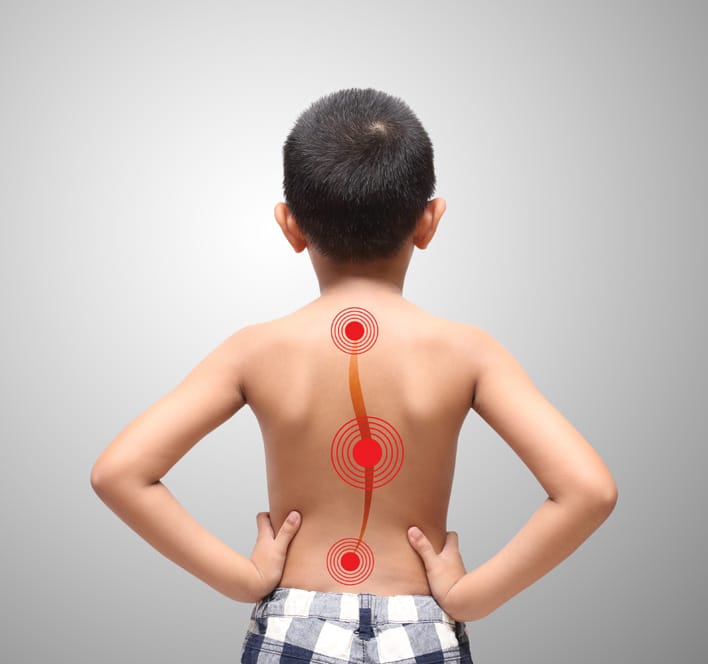Scoliosis affects millions of people in the world and can lead to pain, stiffness, and even a decrease in mobility. It’s important to find the right treatment to correct scoliosis and find relief. But with so many options available, it can be difficult to determine which one is best for you.
The professionals at NJ Spine & Orthopedic offer the latest and most advanced treatments for scoliosis. Our team specializes in minimally and non-invasive treatment options to give you the best chance at a full recovery. We also have patient and supportive patient advocates who can help you every step of the way during your treatment plan.
The Three Types of Scoliosis
The type of scoliosis you have will determine the best treatment option. There are three main types of scoliosis:
- Idiopathic: This type of scoliosis is the most common and the cause of it is unknown. It usually affects children between the ages of 10 and 15 and is typically mild.
- Congenital: Congenital scoliosis is a condition that is usually caused by a birth defect. It can range from mild to severe and is often treated with surgery. Additionally, patients with congenital scoliosis are at a higher risk of other defects in the surrounding areas, such as the heart, genitourinary, and neurological systems.
- Neuromuscular: Neuromuscular scoliosis is caused by an underlying neurological or muscular condition and is typically severe. It is often usually treated with surgery.
Regardless of the type, symptoms of scoliosis include an uneven resting posture, pain, tightness, and difficulty moving. In some cases, patients may observe issues with the skin over the spine such as dimpling, along with abnormal coloring or hairy patches. Additionally, due to the added stress placed on the cardiopulmonary system, patients may experience shortness of breath, heart issues, fatigue, and a decrease in lung capacity.
What Scoliosis Treatment Is Right For You?
The treatment recommended will depend on a variety of factors, including the type and severity of scoliosis, the age of the patient, and the overall health of the patient. Generally, the goal of treatment is to reduce pain, improve mobility, and prevent scoliosis from progressing. Common treatments include:
Bracing
This treatment is typically recommended for adolescents who have mild to moderate scoliosis and are still growing. The brace is designed to keep the spine in its proper alignment and limit the progression of the curve. The type of brace prescribed will depend on the severity of the curve and the age of the patient.
Physical Therapy
Physical therapy is often used in conjunction with bracing to help strengthen the muscles around the spine and improve flexibility. The therapist will create a personalized program of exercises designed to reduce any pain, correct the curvature, and improve movement.
Surgery
Surgery is typically recommended for severe cases of scoliosis or cases that are not responding to other treatments. The type of surgery will depend on the type and severity of scoliosis. There are several types of surgery, including:
Anterior Spinal Approach
The anterior approach means the patient will lie on their side and the surgeon will make an incision in the front of the spine.
Posterior Spinal Approach
The posterior approach is similar to the anterior approach, but the surgeon will make an incision in the back of the spine as the patient lies on their stomach. It is the most common treatment for idiopathic scoliosis and involves fusing the spine to metal rods to allow for more stability and support as the spinal fusion heals.
Decompressive Laminectomy
During this treatment, the doctor will remove the laminae (roof) of the vertebrae which will allow the nerves more space surrounding them. This has a decompressive effect and is often done in conjunction with a spinal fusion.
Seeking Relief from Scoliosis Pain? NJ Spine & Orthopedic Can Help
Overall, the best scoliosis treatment for you will depend on the treatment plan you and your doctor work together to create. NJ Spine & Orthopedic is a leading provider of orthopedic care and has a team of experienced orthopedic surgeons who are dedicated to helping those living with scoliosis find relief.
Each patient is provided with an individualized treatment plan that is tailored to their needs. Our orthopedic surgeons use a variety of methods to help reduce pain and improve mobility, including physical therapy, bracing, and surgery. Don’t hesitate to reach out to us if you or someone you know is struggling with scoliosis pain. Our team is here to help. Contact us online or call us at (866) 553-0612 today to schedule an appointment and learn more about our scoliosis treatments.

